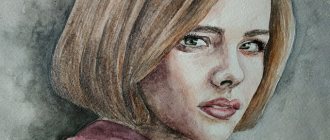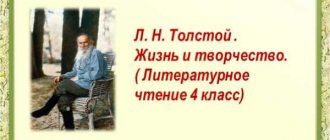Decorative drawing lesson on the theme “Golden Khokhloma”
During the lesson, children in the older group become familiar with the content of the material, manufacturing technology, patterns, decorative elements, as well as color. For a successful lesson, a conversation is held about traditional crafts. Objects with Khokhloma painting are considered.
Class in kindergarten on decorative drawing
Lesson objectives
The main goal of this lesson is to develop the preschooler’s interest in folk decorative art. The child’s artistic creativity should manifest itself through decorative drawing. When creating a new masterpiece, children will be able to use the specifics of drawing “golden Khokhloma” in the older group.
Decorative drawing techniques
The teacher teaches preschoolers to draw patterns using the tips of brushes, with the entire brush. They begin to freely move this tool in different directions.
How to prepare children for class
Variability of boards with Khokhlama painting
I looked at several options
Cutting board model No. 1
Cutting board with a handle, both easy to hold when using and easy to hang on the wall for decoration.
Cutting board model No. 2
This model is similar to model No. 1, but I have not seen a board of this shape in my immediate area.
Cutting board model No. 3
This is a very beautiful model, but very difficult to decorate.
Choosing a board with Khokhloma painting
Of the three samples given, I decided to go with the last one, since I really liked the cutting board with this design, I decided to decorate the board with Khokhloma painting. And I started further work.
Selection of materials and tools for making boards with Khokhloma painting
Material selection
1. A rectangular cutting board made by gluing together several layers of thin plywood.
Selection of equipment, tools and devices
- Brushes No. 1,2,3,4 made of nylon.
- Gouache paint in 12 colors.
- Varnish for coating the finished product.
- Water.
- Palette.
- Pencil TM, eraser
Sequence of execution of the children's kit
Elements, subjects and techniques of Khokhloma painting - Khokhloma painting is a floral ornament composed of a small number of motifs called “grass”, “berry”, “leaf”, “curl”.
Students become familiar with the elements of floral patterns using an educational poster.
All elements of the herbal ornament are drawn immediately with a brush, without preliminary drawing with a pencil, and the brush must be held with three fingers perpendicular to the surface of the leaf.
Explanation of the sequence of performing elements of Khokhloma painting on the blackboard by the teacher:
“sedges” - performed by lightly moving the tip of the brush from top to bottom;
“blades of grass” are strokes with a slight smooth thickening;
“droplets” - drawn by applying a brush to paper;
“antennae” - drawn as a continuous line of equal thickness, twisted into a spiral;
“curls” - performed with light pressure in the middle of the element;
“bush” is the most complex element, it consists of simpler symmetrically located elements - “sedges”, “blades of grass”, “droplets”, “tendrils” and “curls”;
“berries” - lingonberries, currants, rowan berries are drawn with a signet-poke (a strip of paper rolled into a tight tube); Gooseberries and strawberries are painted with a brush. When the paint dries, the berries become yellow.
Preparing for a decorative drawing lesson with children 5–7 years old
To complete the work, the teacher prepares interesting material about folk arts and crafts and composes compositions. After which he introduces children to new material, examining illustrations, stylized images, as well as works of applied art. To make the activity more fun, appropriate melodies are selected.
Note! In addition, the teacher reads fiction to the children, memorizes poems with them, and watches the video clip “Golden Khokhloma.”
Motivating start to class
The main motive is to involve the child in completing the task step by step; you need to choose interesting, fun educational games, for example, “Make a pattern on the dishes” or “Trace the picture.”
For example, the children can be offered to open their own art salon so that guests can choose souvenirs as a keepsake. First, you will have to become artists to create a new masterpiece. You need to make a beautiful painting on the dishes. The teacher displays various dishes, in the form of spoons, vases, bowls with a golden yellow background.
Teaching children 6-7 years old how to draw step by step
Important! Children must choose the silhouette of the dishes to make a beautiful pattern. The teacher asks if they remember what to do?
Children answer that they must draw a curl (a curved branch). This is the most important element of Khokhloma painting. All other elements can be depicted on it. You need to paint the details with the end of a thin brush, alternating colors. To paint berries, children choose a brush and a poke. Next, they have the task of choosing a color. To depict berries you need to choose red, green, black colors. After this, you need to do a warm-up.
Warm-up
Physical education minute
If the children are tired of doing the exercise, they need to rest a little. To warm up, children must repeat the movements after the teacher:
Khokhloma, yes Khokhloma (hands on the belt, body turns right - left)
Our miracle is wonderful! (raise your arms up, lower them down through your sides)
We draw Khokhloma (hands in front of the chest, one on top of the other)
Unprecedented beauty! (raise your arms up, lower them down through your sides).
Let's draw grass (hands in front of the chest, one on top of the other)
Sunny paint (raise your arms up, lower your arms down through your sides)
Rowan berries (hands in front of the chest, one on top of the other)
Scarlet paint (raise your arms up, lower your arms down through your sides)
Khokhloma, yes Khokhloma (hands on the belt, body turns right - left)
What a wonderful miracle! (raise your arms up, lower them down through your sides).
Research activities
Research activities allow us to identify the child’s abilities.
Note! The teacher must analyze the work and identify the result.
The teacher says to the children: “What a wonderful dish this turned out to be - bright, colorful, festive - like real masters, real golden Khokhloma!” Each one has its own unique pattern.
Step-by-step drawing of Khokhloma painting for beginners
Despite the fact that some patterns can be created using a stencil, it is still worth learning Khokhloma painting from the simplest patterns with a brush. To do this, select several very thin and small (00, 01) brushes with squirrel or pony hair (it should be soft), and, guided by the instructions, first circle the proposed patterns several times, then try to draw them on the hatched tips, and then - on the same paper or clean glass.
- Blade of grass or sedge . The simplest and most basic pattern: a slightly curved line to the side, maximum brush pressure in the middle, tapering off at the edges. Thickening occurs very smoothly and has a minimal degree.
- Curl . The next most difficult element; the brush pressure does not change and remains the same throughout the entire length of the pattern; the line curls like a snail.
- Droplet . It’s good to practice pressure on it: place the brush with the base of the bristle, then rotate it 180 degrees and begin to carefully remove it from the surface. At the same time, it needs to be pulled forward. When you get a single pattern, try doing 2 drops in a mirror manner.
- Bush . It consists of droplets collected in a fan, at the base of which a small dot is placed with the tip of the brush.
- Leaflet . The easiest way to create this pattern is to create mirrored blades of grass that curve outward, then fill the inner void with the same color. A more complex version is to adjust the pressure and direction without lifting the brush, creating an oval with pointed ends.
After mastering those patterns that can only be drawn with a brush, it is recommended to try berry elements: for them you need a stamp that you make yourself - it will create the basis of the design. And small details will also be added with a brush. To make a stamp, just take a straw, attach a circle of paper down, and dip this part in paint.
- Lingonberries are made by simply stamping scarlet circles that do not need any additions.
- Currant - several circles of berries collected near a blade of grass, on which single golden dots are then placed with a brush.
- Rowan - in addition to the circles of berries, it is necessary to draw very narrow and elongated droplets and leaves at the base of the bunch. Specks with a brush and gold paint are also required.
- Malinka . A bunch of 6 circles of berries, which are already placed without maintaining a distance, by overlapping each other. The highlights are drawn using the technique of blades of grass, then dots are made with the tip of the brush. A sepal is blades of grass gathered together, a twig is leaves and a thin line.
Drawing materials
To create a real work of art, you will need the following materials:
- album for children's creativity “Golden Khokhloma”;
- tassels;
- sheets of paper with sketches;
- gouache;
What materials do you need to choose for the job?
- tape recorder, disc with a recording of the Russian folk melody “Gusli”,
- Khokhloma products, illustrations depicting dishes;
- napkins;
- brush holders;
- container with water.
Individual exercises
Individual tasks
When starting his creativity, every young master must clearly know and remember the sequence of work. For older kindergarten groups, teachers prepare individual assignments. After they are completed, an exhibition is made. children must look at all the works, do an analysis and choose the most successful drawings.
Didactic games for the development of motor skills and sensory skills in children
Important! For older children, an individual theme “Golden Khokhloma and Forest” or “Continue the Pattern” is compiled.
Step-by-step organizational progress of the work
Step-by-step execution of work on the topic “Decorative drawing in the Golden Khokhloma style”
To carry out the work step by step, children are involved in the process of discovering new knowledge.
- The brush should be held almost vertically with three fingers.
- Initially, the child must depict a curved branch.
- Then you need to draw leaves and berries.
- Then the grass and curls are drawn.
- You should remember to apply a black background.
- At the end, light exercises for the arms are performed.
Outline of a lesson plan on decorative painting in the senior group of kindergarten
The abstract outline looks like this:
- Educational purpose.
- Tasks.
- A new way of doing things.
- What concepts and knowledge need to be updated.
- The reason for the difficulty in doing the work.
- The goal of children's activities is to overcome difficulties.
- Creating all possible conditions for the implementation of your actions.
- Warm up.
- Accompaniment with musical compositions.
- Job analysis.
Final result
Samples on paper
If you are new to this business and are just starting to master the basics of drawing Khokhloma painting, it is better to practice on ordinary Whatman paper. As exercises for positioning your hand, choose simple elements: berries, leaves.
All of them are based on certain movements of the brush. Even if you later work on the finished pencil outline, the circles and curls should be even. It is better to do them in one go.
If you want to know how to learn how to draw a crested child, it is best to master this technique with him, also on paper. The same type of exercise in the form of leaves and berries quickly gets boring for children, so suggest depicting a round tray, plate, spoon or vase. Make the shape of the object yourself, and give your child the opportunity to decorate the object.
Summarizing
The final stage of fruitful work on GCD is conducting a final diagnosis, comparing the results of the work, and identifying the level of development of preschoolers. Evaluating the result, the teacher makes the necessary changes to the work.
By carrying out this work systematically, the children acquire certain knowledge, skills and abilities. By mastering technical skills in drawing, modeling, and appliqué, children develop a steady interest in various creative arts. Content activities are enriched and the game concept develops.
The result of the final diagnostics showed that the children not only acquired certain knowledge, but also learned, using the acquired knowledge, to take a creative approach to performing their work.
Note! Fruitful work should bring preschoolers a lot of joy and satisfaction, foster a desire to create so that they can create their own products.
Every teacher must create a favorable atmosphere to arouse the child’s interest in artistic activities. This can be done with the help of didactic games and musical works.






